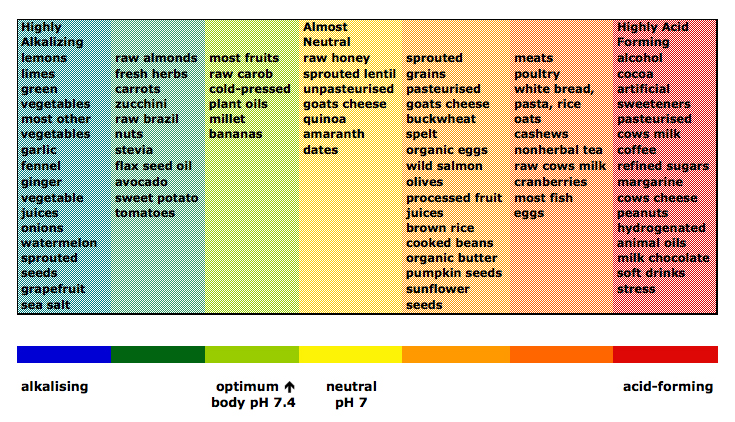Please post in this discussion the people/principles, products, and practices that help you eat better. You can get some starter information from SMARTsteps posted at www.BetterME.us. The general goals; appropriate calories, whole foods plant based diet, with adequate Vit D and minerals, limited hydrogenated oils and sugar.
Better Nutritional Practices
I have been doing some reading on nutrition and osteoarthritis. I must say I am very grateful to all of those researchers who are trying to answer this question. To sum up my understanding to date, I have the following recommendations:
Supplements
- Fish Oil: This should be about 2-4 grms per day, and as Fish Oil, not flaxeed oil or other plant based omega 3 fatty acids.
- Vit D3: This should be in the amount of 2,000-4,000 IUs per day
- MVI: any type of multivitam with will do, but I suggest one that can be cut in half and then take this 3 times per day.
Nutritional Practices
- Three foods that are big on the list include: 1) Kale, which is high in vit K, 2 )Sesame Seeds which are high in minerals and copper in particular, and 3) Sweet Potatoes, high in Vit A. Those that are on blood thinners need to be careful with Kale as it can reverse the effect of blood thinners. Concerning the first two, there have been studies that have found that people with degenerative arthritis have low vit K levels, and there have bee other studies
- One easy way to get these foods in the diet is by blending them and making a fruit/vegetable smoothie (I use a Nutribullet, and really like the design):
- Green: Kale/Spinach/Apple / Blueberries / Raisins / Sesame Seed
- Orange: Orange / Sweet Potato / Carrots / Coconut / Raisins / Sesame Seed
A Balanced Diet, just what the doctor (should have) ordered…
There are just a few dozen nutrients compared to the thousand or so chemical reactions that depend on them to make sure that your body functions properly and efficiently on a daily basis. For many nutrients, they are not used in just one cell, in just one body system, but multiple reactions, in multiple cells, across different systems. Think of the implications. If you are deficient in a nutrient, it is very possible that multiple cells, and systems could be affected, throwing your body out of balance, with some dysfunctions more apparent than others.
So lets say nutrient x is deficient and causes fatigue. What do we do? Get an energy drink or coffee. Now here is the question; has the deficiency been corrected? No. In fact you have now covered up the one warning that your body was deficient, and so the deficiency continues until the next system starts to fail. Perhaps now your vessels can’t relax and you end up with high blood pressure or headache. What do you do? Go to the doctor and get a pill to lower you blood pressure or take a pain pill for the headache. Here is the question… has the deficiency been corrected?? No… However you have taken away the signal letting you know that your body was out of balance, which allows the deficiency to continue. Now another system begins to fail, perhaps interfering with the ability of you muscles and tendons to heal from the daily challenges of life, and you develop a strain, or tendon rupture. No problem, go to the surgeon and get stitched back together, or get a joint replaced. Here is the question while you are trying to recover from the surgery. Has the deficiency be corrected???? NO. So the deficiency continues as we cover up our warning signs with more medicine and more procedures. Our medicine cabinets fill with “cures” which aren’t really cures. What they should represent are supports that help us function, while we correct imbalances to help our bodies restore themselves, but that’s not how we use them. When we look at them as cures and not supports, we don’t look for practices that may be creating deficiencies or toxicities in our lives that we need to correct. So the problems continue until multiple systems have failed, and our “health-care” system can do no more to help us.
There is a better way. Look to wellness behaviors for cures, and medicines as support while we find the cure in our life routines (rest, stress reduction, good nutrition, and regular exercise). Take inventory of your symptoms and if they are gone because of pills, your medicine cabinet, and ask yourself what deficiency (or toxicity) could be the cause. And then begin to implement the change.
As a place to start consider the following:
- Rest/Stress: Do you get 7-8 hours of good sleep every night. Note that we do most of our healing at night. If your sleep is of poor quality or not enough, you will have problems recovering from life’s daily insults.
- Nutrition: some nutrients to consider iodine, Vit D, Omega 3 fatty acids, and Vit C. Things that you don’t need are too much animal protein, saturated fats, hydrogenated oils, highly processed foods.
- Exercise: Need 30-60 minutes of moderate physical activity per day. In addition, you should not be sitting for more than 6 hours per day if you can help it. If you have a position that involves much sitting, try to stand for 5 minutes every hour.
I don’t have all of the answers, nobody does, but if we share our successes and insights, we can make our collective journey much easier. I am reminded of the quote from Hippocrates “let food be thy medicine, and medicine be thy food”.
Does this make sense?
Peace.
-jb
Go Green!
I have a conversation this past week with a firefighter who, in less than six weeks, went from requesting a second surgery, to not only not needing surgery, but feeling that he was well enough to return to work. This was after a year and a half of pain and reduced motion that failed to improve. What made the difference? A change in lifestyle which centered on changing the way he ate. Being inspired by the movie “Forks Over Knives” (click title to watch online for free :)), he decided to eliminate meat, eliminate sugar, and go with a plant based diet. One part of his diet was drinking smoothies recommended at the following website link: 7 Nutritious Recipes (click link for website posting)
I have made some modifications to these recipes, and have come up with three smoothies myself (green, yellow/orange, and red – I call them my traffic light). I will share is my green and orange smoothies (still working on the red):
- Green (good for energy): two handfuls of chopped kale, one handful of chopped lettuce, 2 stalks of chopped celery, handful of frozen peas, one apple (green : ), one banana, cup of pineapple, tablespoon of mint leaves, cup of plain yogurt, and 1/2 cup of water.
- Orange (good for my joints): two oranges, yellow apple, 1/2 small sweet potato (raw), 1/2 of large carrot, banana, slice of ginger, cup of yogurt, and 1/2 cup of water.
Sometimes I will add some beans to my smoothies for a little protein, mainly canned black-beans.
These make more than you can drink in one setting, but a glass or two will keep you energized for most of the morning : )
If you have a favorite, please share..
Eat Better, Feel Better!!!
My job causes me to help care for many who have had work-related illnesses. In doing this I have begun to see what appears to be increasing numbers of people with degenerative diseases who also seem to have trouble healing. Because of this and concerns for my own health I have been in search of ways to help minimize the occurrence and progress of degenerative diseases. While I don’t have it all figured out I am recognizing some patterns and can make some recommendations. As you try these please let me know if you find the recommendations helpful:
1) limit animal protein: meats and dairy are supposed to be supplying us with needed calcium and protein, however their metabolism creates an acidic environment that you body balances by dissolving bone. By the way stress is thought to also add to the acid load. You can hear more about this by watching the movie “Forks Over Knives” which is available on Netflix, or online for free by clicking on the title. While you don’t need to be a vegetarian, I would suggest getting to 4 or more meatless days per week.
2) eat more alkalizing fruits and vegetables: many fruits and vegetables are the answer to too much acidity in our bodies. Not all of the fruits and vegetables however are alkalizing (with the ability to neutralize the acid from meats and dairy). I would suggest that you perform a search for alkalizing fruits and vegetables and get a since of what can be helpful. Probably the quickest change that can be made is to drink two cans of V-8 juice per day (low sodium if salt is a concern).
3) cut down on sugar: the problem with sugar is actually fructose which is a part of sugar. The problem is that fructose encourages uric acid production which is not good for the joints as well as affecting nitric oxide production which protects our vessels and circulation. Major sources of sugar include that which we add, juices, and soda. Sugar is also added to many processed foods. You must also be careful of some fruits which can be high in fructose. For more information look at my prior blog called “toxic sugar” and watch the video of Dr. Lustig (link provided). Most would benefit from not drinking juice or soda more than 2 times per week.
4) cut down on trans fats: these are fats created by directed processing, but can also be created by frying. Their presence can affect the production of certain prostaglandins in our body that help to protect our joints and vessels. Try to limit (or eliminate) fried food to less than twice per week. Better oil choices are un-refined olive and sesame oils. These can be hard to find, and the next best choice is the “cold press” variety. Note that these oils can still develop unhelpful substances by just being exposed to air and light.
5) cut down on flour: while grains are good for you. Flour has been processed to remove much of the nutritional value which is why it needs to be enriched. A better choice is whole grains sources of wheat. For this reason brown rice is also better than white rice. While these are better nutritional sources, they don’t help with the challenge of acidity. It was noted in a book by Dr. Weston Price written back in the 1940s, that those cultures that consumed more sugar, flour, and canned food (representing processed foods), where routinely associated with degenerative diseases. Cultures that avoided these three substances also avoided degeneration. When looking for grains, look for whole grain and sprouted varieties.
By following the above recommendations, it is my hope that you will have less pain, and perhaps slow or even reverse the processes that contribute to degenerative joint disease (osteoarthritis). I hope you find the above helpful. Please share your journey with us by posting comments. As for me, its time for a V-8





